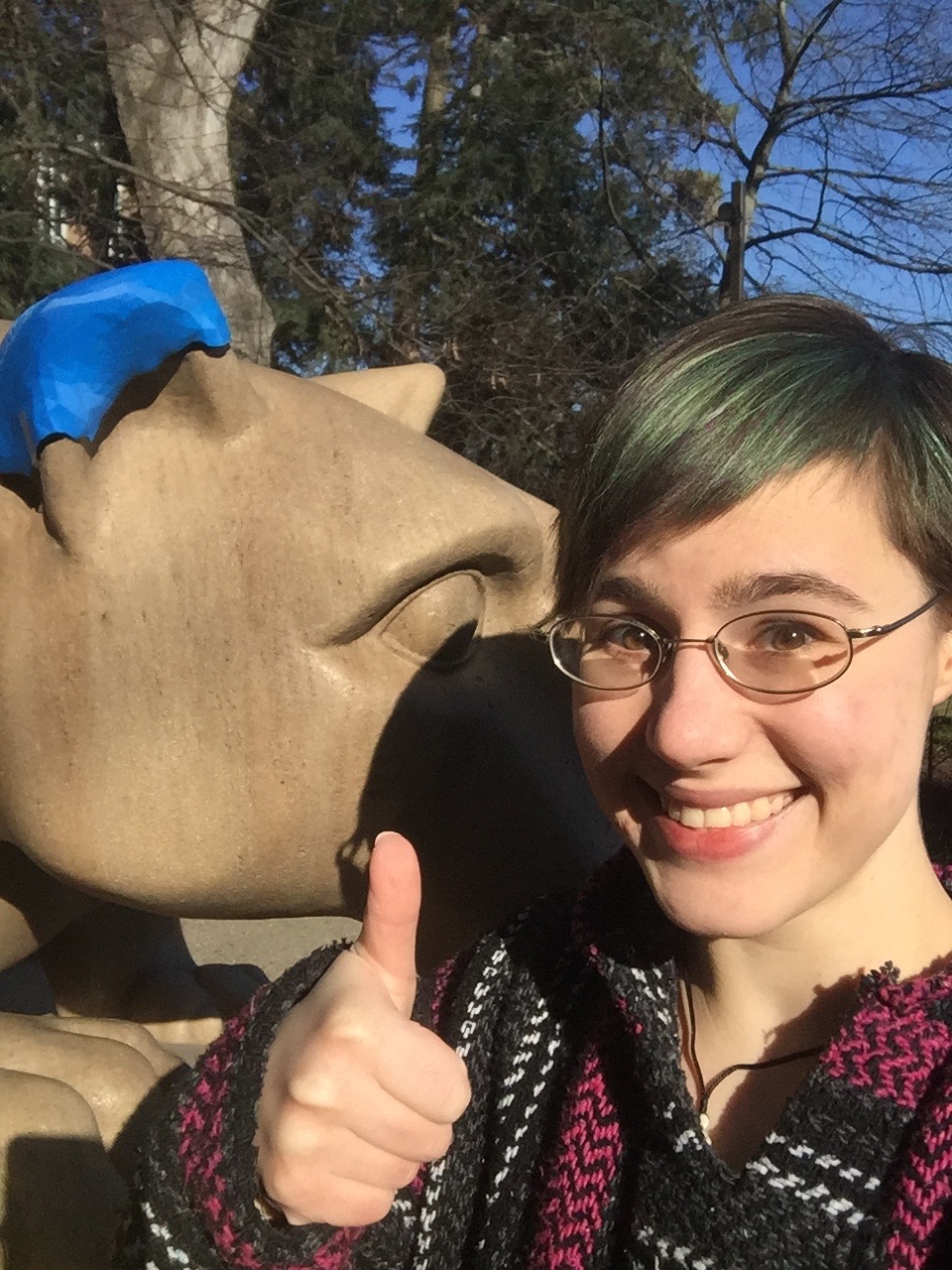Engineering for humanitarian causes inspires graduate student
04/03/18
UNIVERSITY PARK, Pa. - Anne Pauley’s journey through engineering is a unique one. The graduate student, who double-majored for her bachelor's degree, explained, “I couldn’t decide between music or engineering, so I did both!”
It’s her varied passions and work experience that has perfectly enabled her to forge her own path. She said, “I want to take all the experience I’ve gained at Penn State and my internships to make a positive impact on the world in general.”
She added, “Having this multidisciplinary background, it really lends itself to working on interdisciplinary teams.”
Because of this, she was drawn to the Humanitarian Engineering & Social Entrepreneurship (HESE) program at Penn State. HESE’s goal is to aim to encourage different disciplines across the university to create technology-based solutions for the most compelling problems facing humanity today.
Pauley devoted her research time to the Kijenzi project, which aims to create a 3D printing solution for under resourced areas. “It’s really an exciting project,” she said. By equipping local entrepreneurs in rural Kenya with a computer-less, easy to use 3D printer, it helps the population become empowered to create what they need for their community.
One of the biggest applications of the Kijenzi project is creating replacements for medical equipment, particularly for microscopes, which are often used to detect malaria. When broken, the microscopes can quickly gather dust without the necessary replacement parts. “But having a 3D printer to replace those parts cuts out some of the difficulties with sourcing and shipping parts to Kenya,” Pauley explained.
It’s these altruistic issues that drew Pauley to the project. “I’m really interested in the humanitarian aspects,” Pauley said. “Engineers can bring the technical aspects to the picture.”
In her free time, Pauley is also fascinated by the innovations 3D printing can create at home. As a member of the 3D Printing Club, Pauley and fellow club members Nate Ehrhardt and Lach Peeke recently 3D printed a temporary replacement ear for the Nittany Lion Shrine in University Park.
“We’re really interested in showing people both at Penn State and outside what 3D printing can do,” she said.
During the fall of 2017, Pauley set off for an internship at Autodesk Pier 9 in San Francisco, California. “Not only did I love San Francisco, but I got a manufacturing and design experience,” she said.
Bitten by the design bug, she also went on to complete an internship at Walt Disney World in Orlando, Florida. Pauley used her engineering expertise to help design Disney Animatronics, which she described as a unique task.
“It’s basically robotics, with a shell,” she explained. “You need to create designs in combination with form and function. It was a challenge to fit all of the mechanics into the form factor of say, a princess or cartoon character.”
While she couldn’t comment on the specific characters she helped create, she said she was looking forward to visiting the park again to see one specific Animatronic. “It’s going to be really exciting because I spent most of my internship working on one very complex figure,” she enthused.
With her work already spanning Kenya, Disney World, San Francisco, and University Park, Pauley is excited for what’s next after her graduation in May. “There have been a lot of hurdles from taking a non-traditional engineering path,” she explained. “But in the end, it’s been so worth it.”
MEDIA CONTACT:
Erin Cassidy Hendrick
emc5045@engr.psu.edu



